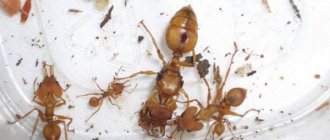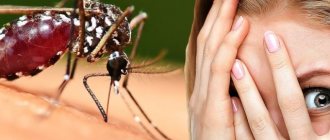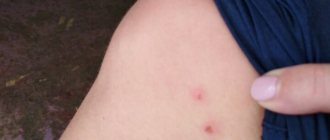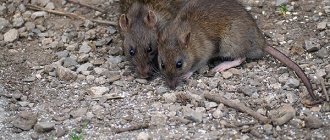Insectophobia is the fear of insects. Find out why it occurs, how it manifests itself, and how to treat it. Certain types of insectophobia.
There is not a single person on earth who is not afraid of anything. Fear is a natural, protective reaction of the body that helps us survive in this world. But there is no need to confuse fear with phobia, a pathological, neurotic condition that does not help one survive, but, on the contrary, significantly reduces the quality of life. There are different phobias, psychology counts hundreds of them. Some are very rare and even curious, for example, eichophobia (obsessive fear of speaking and hearing good wishes) or aulophobia (obsessive fear of the flute), while others are found quite often in psychiatric practice. One of these is the fear of insects. So how to live with insectophobia? Can it be cured?
Phobia - fear of spiders, cockroaches, ants, bees, wasps, worms and other insects: causes
Where does the fear of insects come from? Can we call it groundless?
IMPORTANT: Some scientists call insectophobia an instinctive, subconscious fear that arose in a person at a time when he lived in the lap of nature and, in order to survive, had to beware of insects so that they would not bite him, climb into his ear or nose, etc.
- Most often, insectophobia arises in childhood in response to a strong experience caused by contact with an insect. For example, a child was stung by a wasp, as a result of which he experienced fear and pain, or he had a severe allergic reaction.
- A phobia can also arise as a result of a child being frightened by what he thinks is a scary sight or behavior of an insect.
- Think about what you allow your child to watch on TV. The cause of insectophobia can be films and cartoons about giant, militant, deadly spiders, bees, flies and ants trying to take over the earth. This “trash” will most likely make an adult laugh, but it can seriously frighten a child, causing mental trauma.
- An inadequate reaction of an adult to an insect can lead to the development of insectophobia in a child. If a mother, at the sight of a cockroach, jumps onto a chair screaming or, screaming and waving her arms, runs away from a wasp peacefully flying by, the child may think that these insects pose a very real and very serious threat. Well, or he’ll just start imitating adults.
Science-fiction films about giant killer insects are one of the causes of insectophobia.
Insectophobia – panic fear of insects
Insectophobia is a mental disorder characterized by an intense fear of insects. Another name for it is entomophobia. As a rule, a person suffering from this disorder is frightened not by all creatures in a row, but by certain types of them, for example, bees, wasps, cockroaches, flies, ants, fleas, spiders, bedbugs. Some patients have a fear of all insects.
Manifestations of a phobia can range from hostility and disgust to panic horror at just the sight of a flying or crawling insect.
How to get rid of arachnophobia - fear of spiders: treatment
Arachnophobia is an irrational fear of spiders.
IMPORTANT: It would seem that spiders should not frighten Europeans, because there are no species near them that pose a real threat. But the inhabitants of the Tropics, for example, like our distant ancestors, have something to fear: they live side by side with poisonous arthropods, the bite of which can be fatal to humans. Surprisingly, arachnophobia practically never occurs among them. This is explained by the fact that they simply cannot afford to behave irrationally for fear that panic could cost them their lives. Where poisonous spiders live, they are shunned, respected or idolized. But among residents of large cities, fear of spiders is a common occurrence.
Symptoms of arachnophobia can be expressed with varying intensity:
- there is a feeling of discomfort or disgust at the sight of a spider, alive or in a picture
- there is a desire to run away from the spider
- there is a desire to kill an insect
- at the sight of a spider, a person has a panic attack, during which he loses control of himself - he begins to scream, wave his arms, run away, or, conversely, falls into a stupor, etc. (in this state, a person can harm himself or others)
- there is an obsessive desire to protect himself from contact with spiders in the future (he looks for spiders in his home, tries to poison them, tries not to appear where these arthropods may live)
With arachnophobia, an encounter with a spider can result in a panic attack.
The only effective treatment for arachnophobia is to work with a psychiatrist, during which the patient is taught to overcome his own fear. The task is to help the patient convince himself that the object of his fear is not a source of danger. During psychotraining, the patient gradually comes into contact with:
- objects resembling or related to a spider
- images and dummies of spiders
- live arthropods
IMPORTANT: In case of panic attacks, the patient may be prescribed sedatives or antidepressants.
What to do if an attack takes you by surprise
An attack of pathology can be compared to a real panic attack. At this moment in time, a person experiences a lot of unpleasant sensations. It seems to him that he is about to die, or that something terrible will happen to him. If such conditions are repeated with enviable regularity at the sight of insects, then this is a reason to consult a doctor.
In order to help yourself, you can and should do physical exercise, go for regular runs, and move. Or just communicate with someone. You need to try to switch your attention to another object that does not cause fear.
Of course, you should adhere to the course of therapy prescribed by your doctor. Fear of insects is well corrected in group classes attended by people suffering from similar phobias. However, if an attack of phobia takes you by surprise, then you need to try to help yourself. Breathing exercises have a very good effect. It perfectly relieves stress and brings you into a state of calm.
Try to breathe less often, but deeper. Take a paper bag in your hand and exhale long, then wait 8 seconds and slowly and calmly exhale into it. And repeat this for 5-8 minutes. This will allow you to calm down.
How to live calmly and without phobias
We looked at what the fear of insects is called and what ways you can cope with it. The psychological state of the patient himself is a very important criterion if he decides to cope with his phobia. It is worth buying books about insects with large pictures and calmly looking at them. This will allow you to get used to how they look. The opportunity to see something attractive in the form of an insect. Perhaps there is something pleasing about its coloring.
You can visit, for example, a butterfly exhibition and calmly watch them. If the cause of fear was a movie, then you can watch it again. Perhaps there will be no trace of the phobia left.
How to get rid of blattophobia - fear of cockroaches: treatment
Cockroaches in the house are unhygienic and disgusting. But it is not mortally dangerous, especially since they can be successfully fought. If you are familiar with this problem, read the article “How to get rid of cockroaches in an apartment once and for all: drugs and folk remedies for cockroaches. How to buy poison, repellent devices, traps and effective remedies for cockroaches in the Aliexpress online store: price, catalog”, it may be useful to you.
Blattophobia: disgust towards cockroaches turns into wild fear.
But people suffering from blattophobia, at the sight of an ordinary domestic dog, its bursa or even feces, experience terrible fear, fall into panic or hysteria, their pulse rate changes, their legs go numb, and a stroke can even occur. The irrational fear of cockroaches must be combated using psychotherapy methods:
- hypnosis
- cognitive therapy
- taking pharmacological drugs
How to get rid of myrmecophobia - fear of ants: treatment
IMPORTANT: Myrmecophobia is a word of Greek origin: myrmex - ant, phobos - fear.
The fear of ants is justified by the fact that some of their species are dangerous to humans (the bite of a fire ant can cause suffocation and death, and red ants bite very painfully) and his property (black ants can destroy wooden buildings). Fear is fueled by numerous stories and films about deadly ants. Ant bites on the street can lead to the development of a phobia in children. A person with myrmecophobia is afraid of the sight of ants; it seems to him that small insects live in his house, crawling on his things and products.
The fire ant, its bite can be fatal to humans.
Having diagnosed a patient with a fear of ants, the psychiatrist will advise him to desensitize his fear in the same way as for arachnophobia.
Symptoms
If the phobia of insects is too strong and interferes with a full life, you need to consult a psychologist, otherwise self-treatment can only worsen the situation.
How to recognize if you have a phobia:
- an encounter with an insect causes dizziness, sweating, rapid heartbeat, inappropriate behavioral reaction,
- panic begins, there is a desire to run away and hide,
- constant treatment of the house with repellents, fear of opening windows so that insects do not fly in,
- fear of outdoor recreation.
If such reactions are not observed from the type of insect, this means that not everything is so bad and you can begin to get rid of the phobia on your own.
Outdoor recreation is not available to patients with insectophobia
How to get rid of apiphobia (melissophobia) - fear of bees, wasps: treatment
Bees are useful insects for humans; beekeeping products have medicinal and gastronomic value. But their bite can lead to a fatal allergy. In addition, this bite is painful, especially for a child. There is something to be afraid of, but not to panic. The first manifestations of apiphobia are the desire to run away from it or kill the insect when they see a bee. As fear worsens, a person may avoid spending time in nature, drinking and eating outside, to avoid being stung by a bee or wasp. Then feelings of anxiety and panic attacks appear.
Apiphobia - fear of bees and wasps.
To cure a patient of a fear of bees, a psychiatrist will try to slowly and gradually bring him closer to the object of fear, and if necessary, prescribe medication.
How does a phobia manifest itself?
To determine a pathological condition or a common fear of insects, you need to observe the child. Characteristic signs include panic, which a person is unable to cope with on his own. The individual flees, looking for somewhere to hide. With intense anxiety, redness and pallor appear. There are also dilated pupils, a state of strong psychomotor agitation.
The insect can cause harm when experiencing fear. A person in such a situation uses insecticides and other household chemicals for protection. In most cases there is no obvious need for such actions. For protection, the individual puts on a mask or clothing, he goes into nature without hunting, tries to listen to the space, observe the world around him.
<<Contents>>
How to get rid of scoleciphobia - fear of worms: treatment
Worms are vile and disgusting. They, like huge inhabitants of dungeons, became heroes of ancient myths. Not everyone dares to pick up a worm. But those who are terrified of them are said to suffer from scoleciphobia.
Art therapy is used to treat scoleciphobia.
In addition to desensitizing fear, a psychiatrist, as part of the treatment of fear of worms, can recommend art therapy to the patient - draw a worm as the monster the patient imagines it to be, and then destroy the drawing.
Types of insectophobia
In psychology, there is a whole list of names for various manifestations of fear of insects. We list the most famous of them:
- acaraphobia, scabiophobia - fear of ticks;
- apiophobia – fear of bees, wasps, bumblebees, hornets;
- millipodaphobia - fear of centipedes;
- arachnophobia – fear of spiders and arachnids;
- dipterophobia – fear of flies;
- isopterophobia – fear of termites and the like;
- cnidophobia – fear of various stinging insects;
- myrmecophobia – fear of ants;
- Scoleciphobia – fear of worms and larvae;
- parasitophobia – fear of parasites;
- phthyriophobia – fear of lice.
There is also a fear of mosquitoes, which has not yet been given a separate name.











